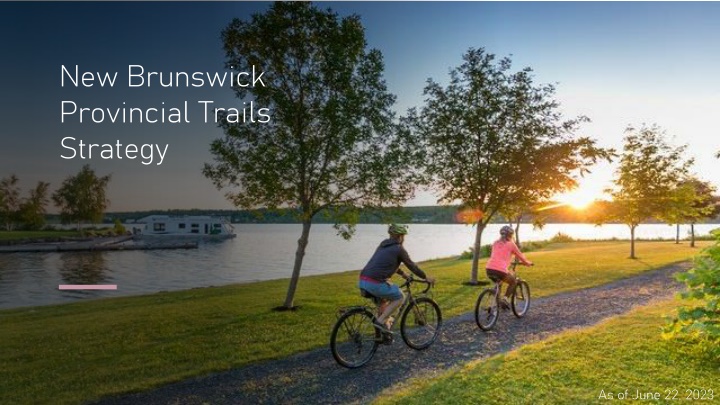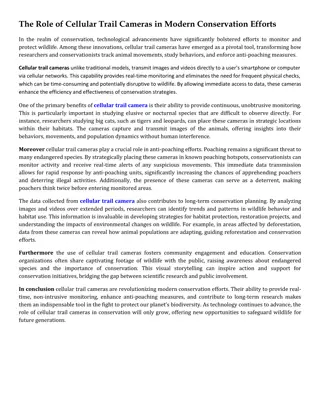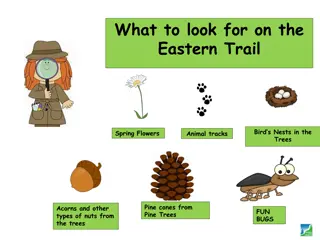
Sustainable Trails Strategy for New Brunswick's Thriving Tourism Industry
Discover the importance of the New Brunswick Provincial Trails Strategy for better coordination and management of its diverse trail network. The vision aims for sustainable trail tourism, guided by principles of stewardship, diversity, sustainability, community development, safety, and partnerships. Explore the key benefits including tourism impact, rural community revitalization, cultural heritage preservation, environmental conservation, active transportation, and social inclusion.
Download Presentation

Please find below an Image/Link to download the presentation.
The content on the website is provided AS IS for your information and personal use only. It may not be sold, licensed, or shared on other websites without obtaining consent from the author. If you encounter any issues during the download, it is possible that the publisher has removed the file from their server.
You are allowed to download the files provided on this website for personal or commercial use, subject to the condition that they are used lawfully. All files are the property of their respective owners.
The content on the website is provided AS IS for your information and personal use only. It may not be sold, licensed, or shared on other websites without obtaining consent from the author.
E N D
Presentation Transcript
New Brunswick Provincial Trails Strategy As of June 22, 2023
Why? Why? The New Brunswick Trail Industry, government stakeholders, and key external stakeholders require a progressive provincial trails strategy in order to achieve better coordination of the planning, development, management, programming, and marketing of its diverse managed trail network.
Vision Vision A sustainably managed and internationally recognized trail tourism destination that supports a thriving economy through its diverse offering of trail experiences.
Guiding Principles Guiding Principles Stewardship: Ensure that trail development and trail management are grounded in sound environmental stewardship and management practices. Stewardship of landowners, including adjacent landowners is critically important. Encourage responsible use and conservation of the land through Leave No Trace Principles. Diversity & Inclusion All users are able to participate in trail experiences. The diversity of the landscape of New Brunswick needs to be celebrated when trails are developed. Ensure that there are diverse trail experiences. Sustainability Trails are managed and developed as sustainable infrastructure for the long-term. Trail organizations have a sustainable management plan in place. Community Development Communities are encouraged to take ownership in the management and their trails and promote experiences that meet the needs of the community. Safe and Secure Risk Management is paramount in the development and management trails in New Brunswick. Partnerships, Collaboration & Engagement Encourage greater collaboration among trail user groups and other key stakeholders to capitalize on the potential opportunities for trails.
Key Benefits Key Benefits Tourism Impact Trail use boosts spending at local businesses. Communities in trail towns benefit from the influx of trail tourists going to restaurants and other retail establishments. On longer trails/larger trail networks, hotels, bed and breakfasts, and outdoor outfitter benefit. Revitalization of Rural Communities Trails have been proven to revive many of the small communities that they pass through by creating opportunities for small businesses, providing recreation infrastructure and increasing their aesthetic and vibrancy. Preservation and Interpretation of Culture and Heritage Trails can tell the stories of our First Nations Communities, Acadian Culture, and other natural and social histories of the Province. Tourists are increasingly attracted to educational oriented experiences provided by cultural and historic sites. Conservation of the Environment Sustainably built trails contribute to enhanced environmental awareness and foster environmental stewardship by providing access to nature. Active Transportation Trails are critical infrastructure in Active Transportation networks, which create greener communities, reduce greenhouse gas emissions and improve the health and wellness of commuters. Social Inclusion Trails are a safe and inclusive space for underrepresented groups communities when developed in a manner that takes everyone s needs into consideration. Gathering places for trail users such as trail heads, trail cafes, club houses, restaurants or a trail office, creates a sense of community.
Tourism Value of Trails Tourism Value of Trails Trail use increased during the Covid 19 Pandemic. A 2022 survey showed that over the people surveyed increased their use of trails and 100% of those will continue to use them and 55% will include a trail component as part of their next vacation 78% of the respondents felt that trails play a very important part of the tourism economy with 85% stating that they support local businesses by spending money when they use the trail Transformative placemaking and regenerative tourism principles will be fundamental in future trail development There aren t cash registers on the trail. If you want trail users to boost your local economy, you have to tap your town in that opportunity- actively. Move your whole community forward by transforming into a trail-friendly destination where people want to stay, explore, and spend (The Trail Town Program - American Trails).
Trends in Trails Trends in Trails Trail Tourism: The potential for trails to draw tourists and become economic drivers in their communities is becoming increasingly known. As more communities look to benefit from trail tourism and economic infusion, it will be important to accurately measure and monitor the Return on Investment and ensure the long-term sustainability of these trails. Climate Change: Climate change will continue to have an impact on trails with more major weather events taking place more frequently. Catastrophic infrastructure failure can be avoided if trails are assessed and upgraded in advance of these major weather events. Renewed Interest in Outdoor Recreation: There has been an increase in outdoor recreation and there will be pressures put on recreational infrastructure to support the increased demand. This includes trails. Aging Population: New Brunswick s population is aging, and the province needs to ensure that older adults have the services necessary to live a fulfilling life. This includes developing age-friendly communities, with accessible transportation and recreation options being critical components. Community Wellbeing: The pandemic has seen an uptick in the number of people moving to New Brunswick for a more balanced and slower pace of life. Trails are a key component to vibrant and healthy communities, something that newcomers to the province are expecting.
Increased Diversity of Trail Users: The pandemic spurred an increase in trail use, which included introducing a wider range of users from underrepresented communities. Broader Range of Trail Uses: Growing user groups such as mountain bikers and dirt bike riders have increasing demands for new and unique trails. Developing ways to accommodate and integrate these new uses into the trail network (independent trail networks, shared trails, joint use trails, etc.) will be essential. Active Transportation: In order to mitigate the risks of climate change as well as create more vibrant and healthy communities, many municipalities are developing and implementing active transportation strategies. Ensuring legislation and policy are in place to facilitate the development of these routes is a key consideration. Advancement of Technologies: Legislation, policies, and even how trails have traditionally been built may not adequately accommodate the advances in the technology of some things such as eBikes, eScooters, adaptive devices, side by sides, and increased width of tracks on snowmobiles.
Goals and Actions Goals and Actions and Key Outcomes and Key Outcomes
Goal #1: Goal #1: Improve Government Process for Approving and Improve Government Process for Approving and Supporting Trail Development Supporting Trail Development Year 1 Create a trail development portal that is accessible to trail managers. Year 2 Conduct a jurisdictional scan in order to investigate the potential benefit of creating new legislation around trails. Year 3 Implement, in cooperation with trail managers and GNB stakeholder departments, a trail database and mapping system to facilitate trail planning and development. Key Outcomes A coordinated approach to trail development on all public land A more strategic approach to trail development throughout the province An engaged trail industry that works collaboratively with GNB to develop and maintain an internationally recognized trail network
Key Outcomes Key Outcomes A coordinated approach to trail development on public land A more strategic approach to trail development throughout the province An engaged trail industry that works collaboratively with GNB to develop and maintain an internationally recognized trail network The development of regional destination trail networks that offer clusters of experiences and extend visitor stay
Goal #2: Goal #2: Assist in Strengthening the Leadership and Assist in Strengthening the Leadership and Collaboration with the Trail Collaboration with the Trail I Industry ndustry Year 1 Identify opportunities for collaboration between trail managers that create more sustainable trail networks . Foster the re-establishment of a provincial greenway organization that ensures the successful implementation of the Strategy and a voice for all trail users and builders . Year 2 Foster collaboration within the trail industry and with key stakeholder organizations to ensure that there are opportunities to leverage resources to reduce duplication of efforts. Key Outcomes Quarterly meetings of PTAC are scheduled annually and Working Group meetings are held (at a minimum) on a bi-monthly basis to provide opportunities for collaboration and engagement between the Trail Industry and GNB. A governance model for the establishment of a Greenway Organization has been developed. 5 new programs are developed to encourage increased use by underrepresented communities and/or celebrate the culture and heritage of the province.
Key Outcomes Key Outcomes Greater alignment between the trail industry, key stakeholder organizations, communities and all levels government A strong voice for all trail users Collaboration with key stakeholders and communities that will create stronger "trail towns" and develop a "trail culture"
Goal #3: Goal #3: Increase Trail Use and Maximize Tourism Potential Increase Trail Use and Maximize Tourism Potential Year 1 Establish a performance measurement framework for trail usage on trails in New Brunswick. Review and update the Signature Trail Program. Year 2 Create tourism focused experiences for trails in cooperation with the trail managers. Develop Risk Management Program that will provide guidance to trail organizations to ensure a safe experiences for users and their volunteers. Year 3 Establish marketing and promotional programs aimed at both signature and recreational trails that will increase use by residents and visitors of the diverse trail network in New Brunswick*. *This will be determined at the end of Year 2
Key Outcomes Key Outcomes A baseline of information to establish a measurement for future years An advanced appreciation of our cultural and natural heritage through trail use A better understanding of the trail user and their expectations An exceptional user experience for both visitors and residents An increased awareness of and use of the extensive trail network An internationally recognized Signature Trail Network
Goal #4: Goal #4: Maximize Funding, Resources, and Capacity for Maximize Funding, Resources, and Capacity for Trail Development, Maintenance and Operations Trail Development, Maintenance and Operations Year 1 Conduct a review of existing funding programs to maximize return on investment and assess any gaps in funding priorities. Year 2 Develop a self-assessment tool to assist trail organizations to assess the long-term sustainability of their organization. Work with the trail industry to develop programs to increase on-the-ground maintenance capacity for trail organizations. Key Outcomes Clearly defined funding programs Strong and sustainable trail and user groups organizations Well maintained trails that exceed the expectations of the trail user
Long Long- -Term Outcomes Term Outcomes Through the development of this Strategy the Trail Industry and Government are committed to the following long-term outcomes: All residents of the province of New Brunswick benefit from a sustainable well-managed trail network for generations to come, Trails contribute to the vibrancy, resiliency and economic prosperity of communities throughout the province, New Brunswick s trails are recognized as industry leading tourism products and recreational infrastructure throughout North America and around the world, Trails are developed in a manner that respects that natural environment of the province and contributes to the preservation of our unique biodiversity.
Take Aways for Municipalities Take Aways for Municipalities Think of trails as a way to connect people to places and each other Understand the future trends of trails and be ready to adapt to these changes Work with your local trail organizations to facilitate development, maintenance and programming Ensure that the work that you are doing with respect to trails aligns with the objectives of the Provincial Trail Strategy Ensure that your community is trail friendly : infrastructure to support trail users bicycle/snowmobile/ATV storage in visible areas, access to washroom facilities, water, good directional signage Reach out to the Department of Tourism, Heritage and Culture Sport and Recreation Branch: Community/Recreational Trails Tourism Development: Signature Trails






















